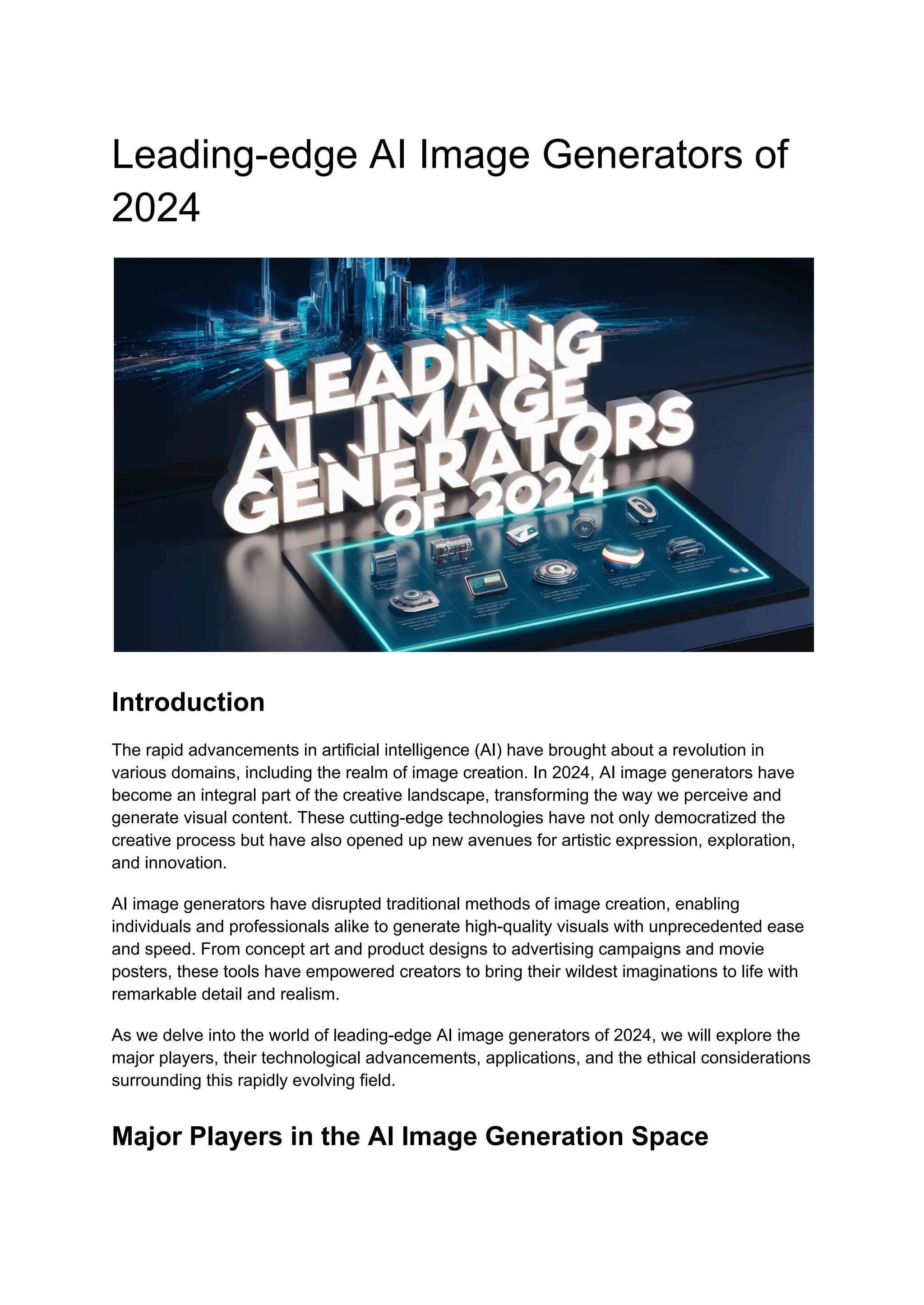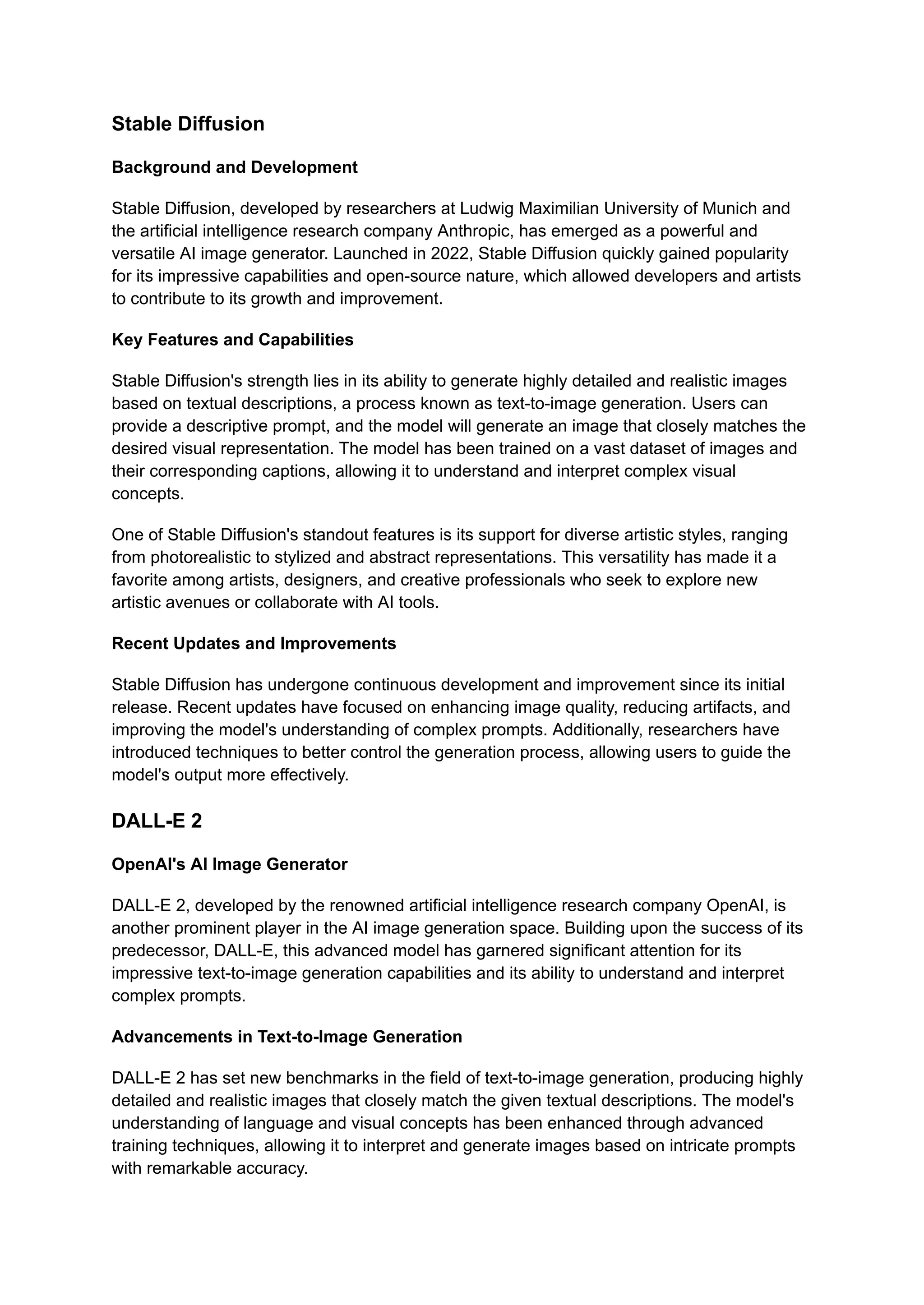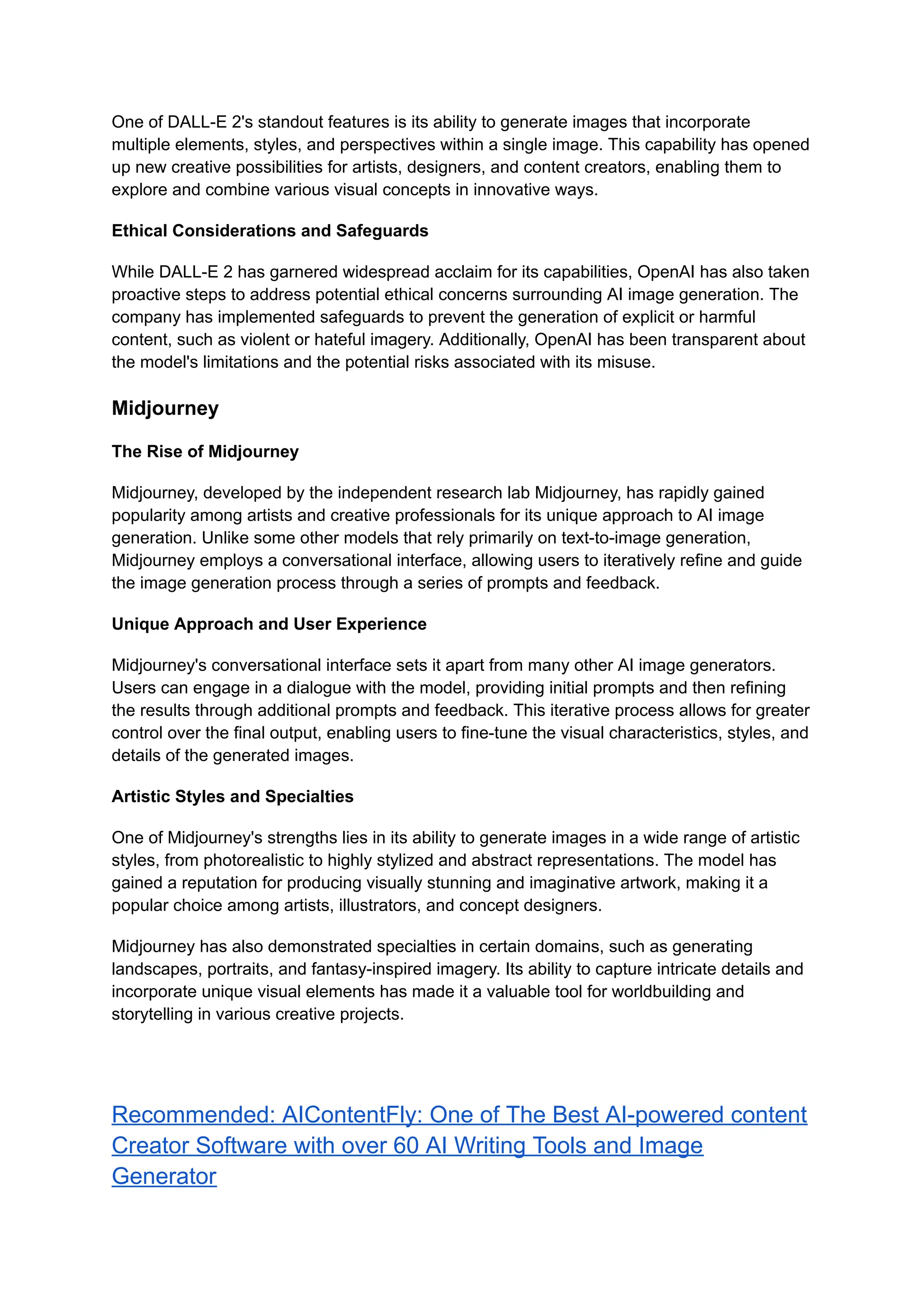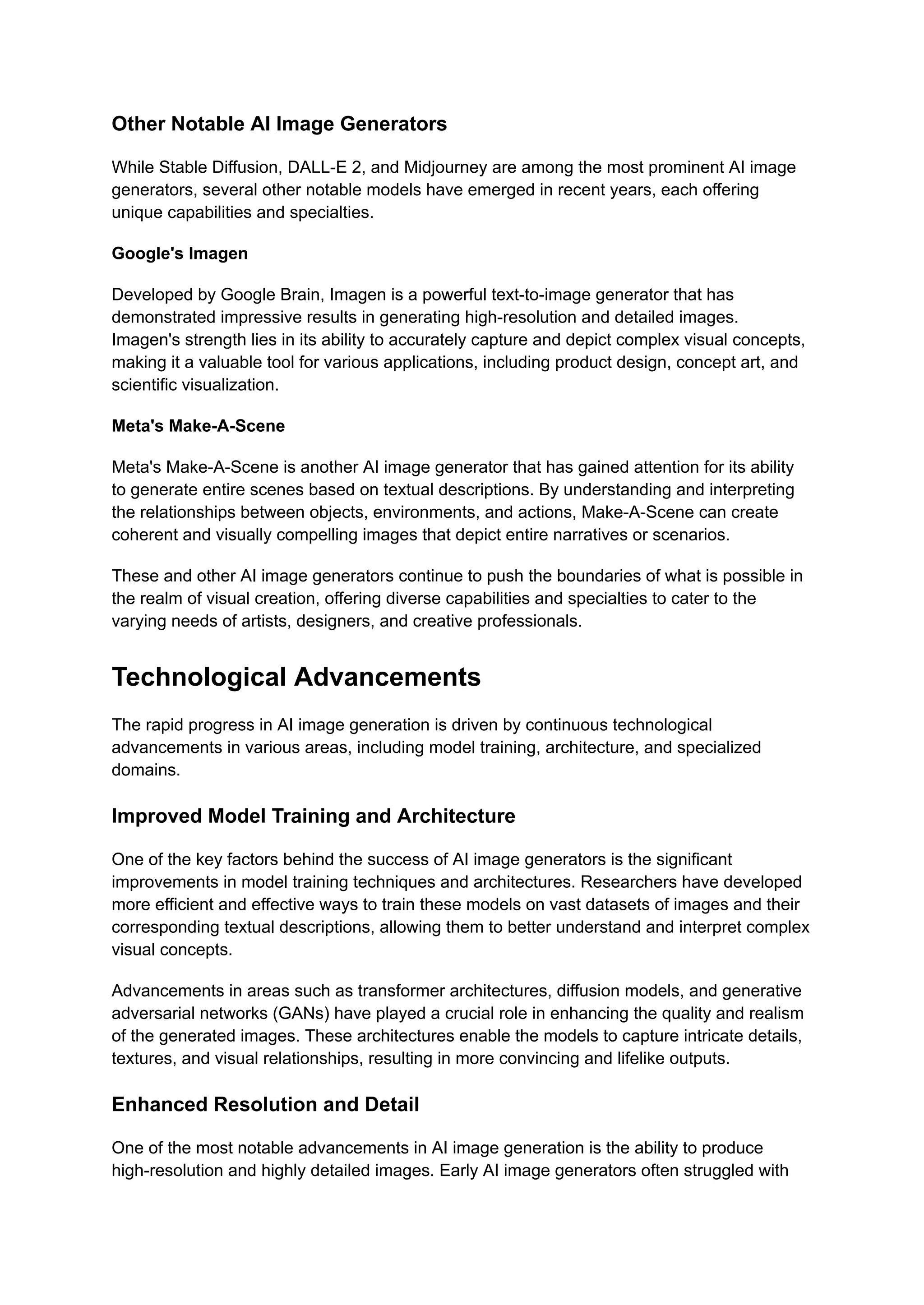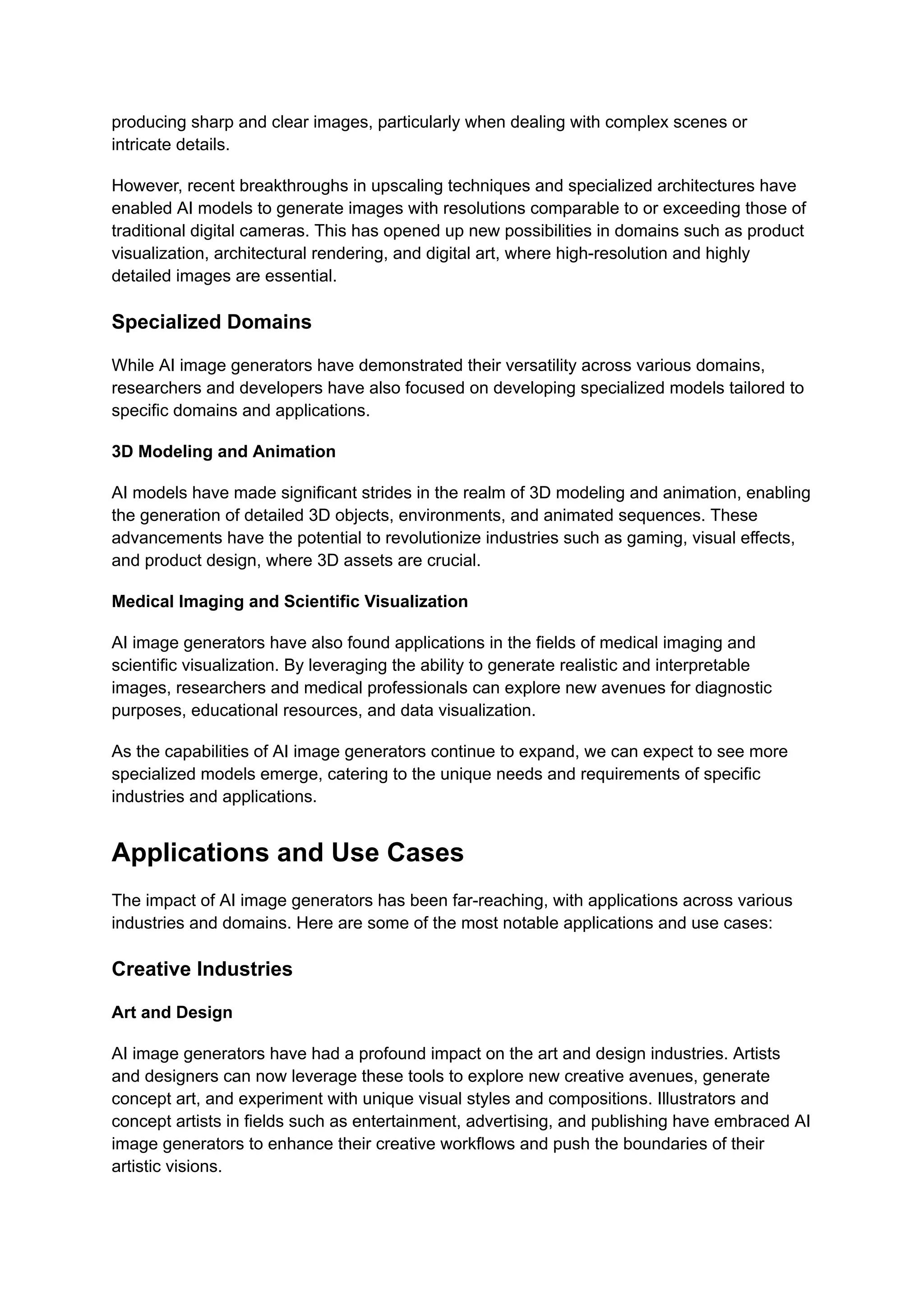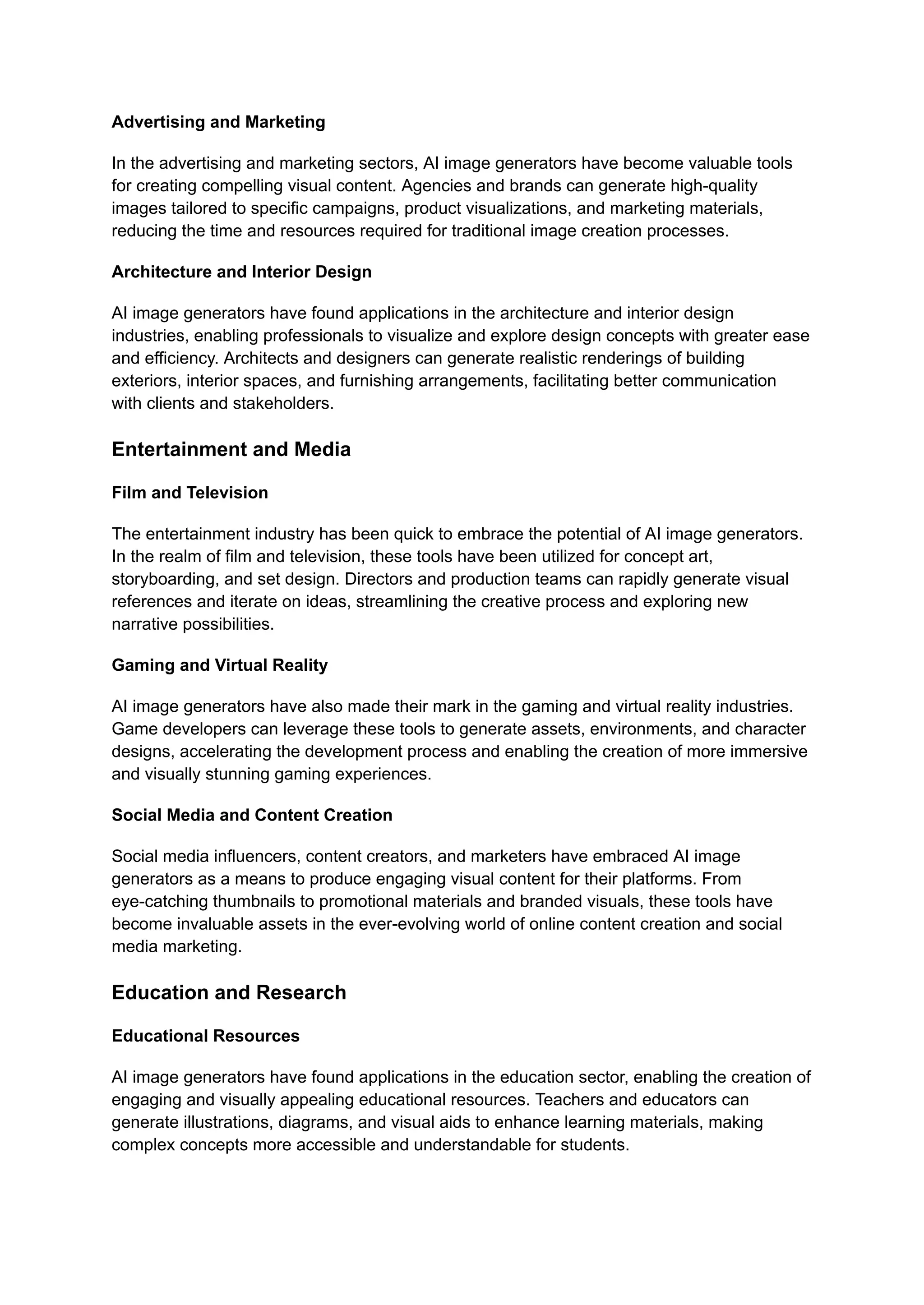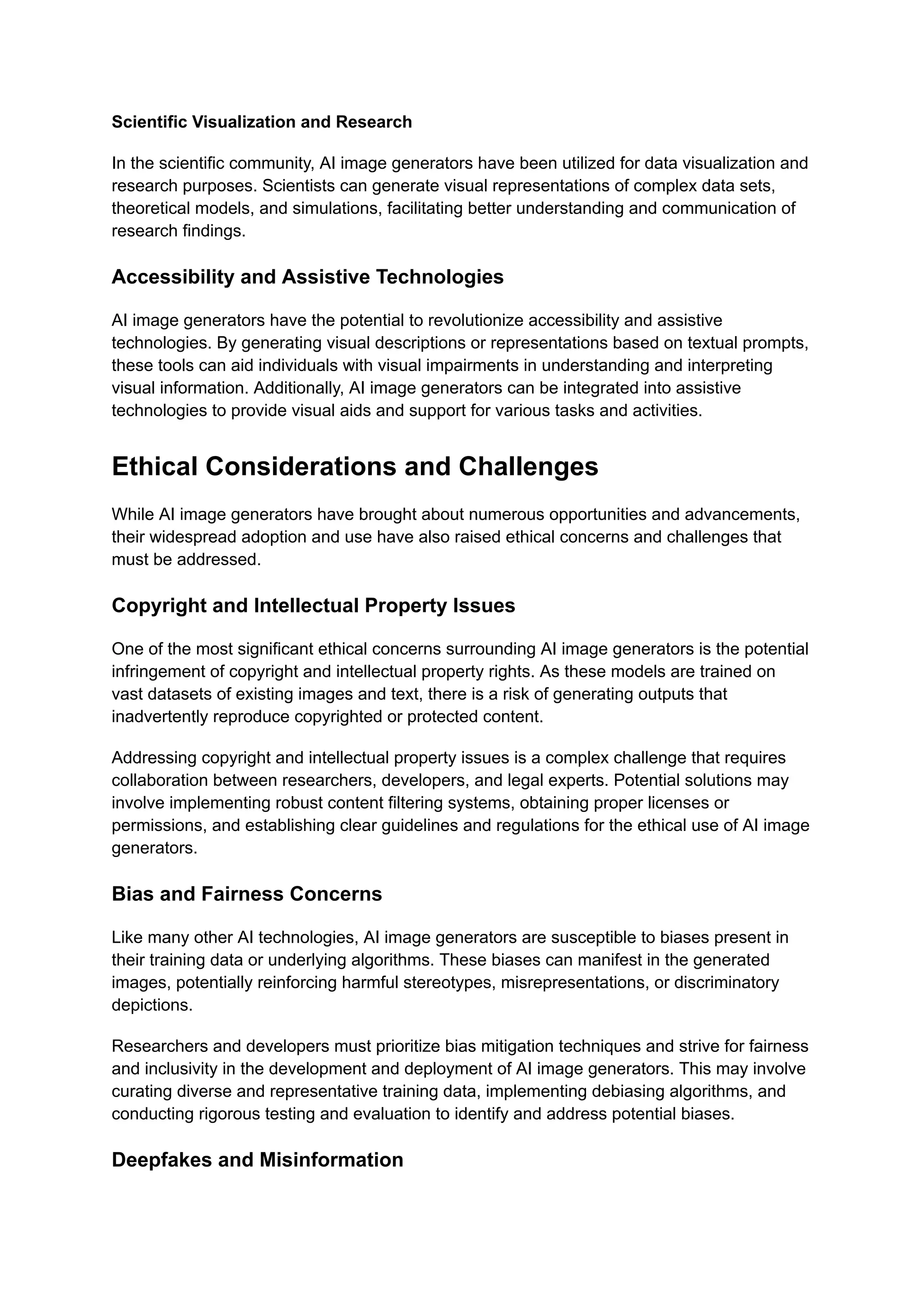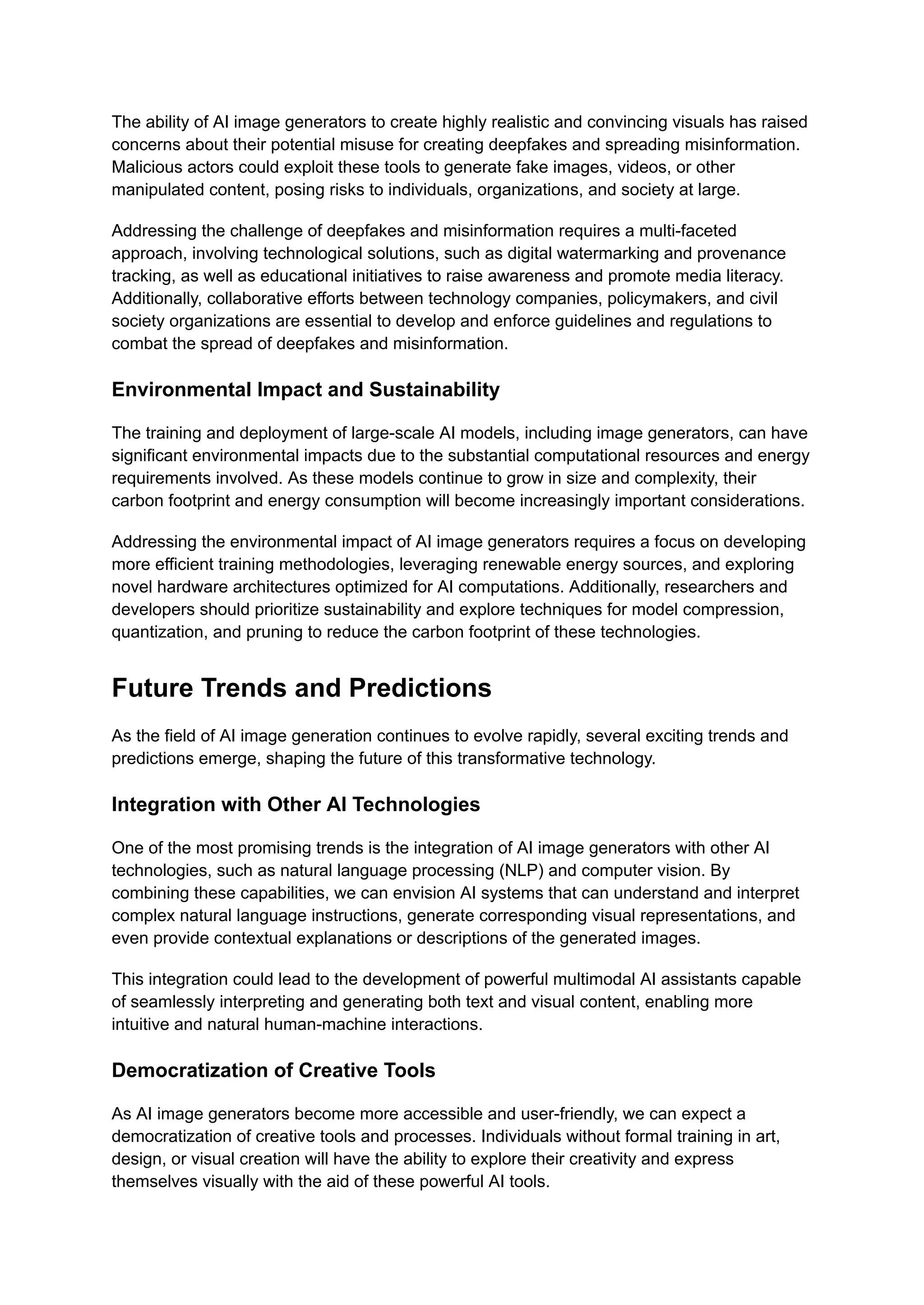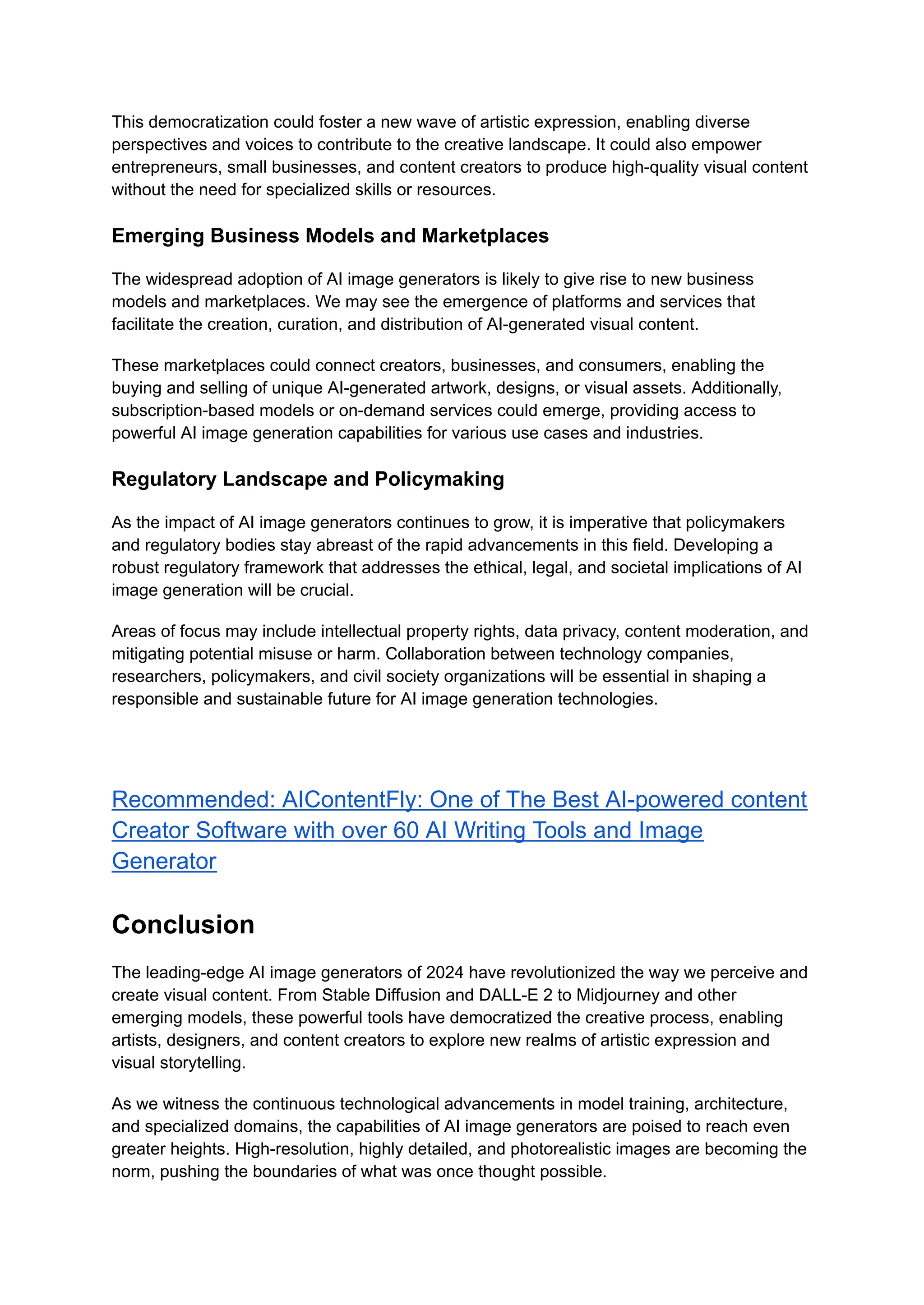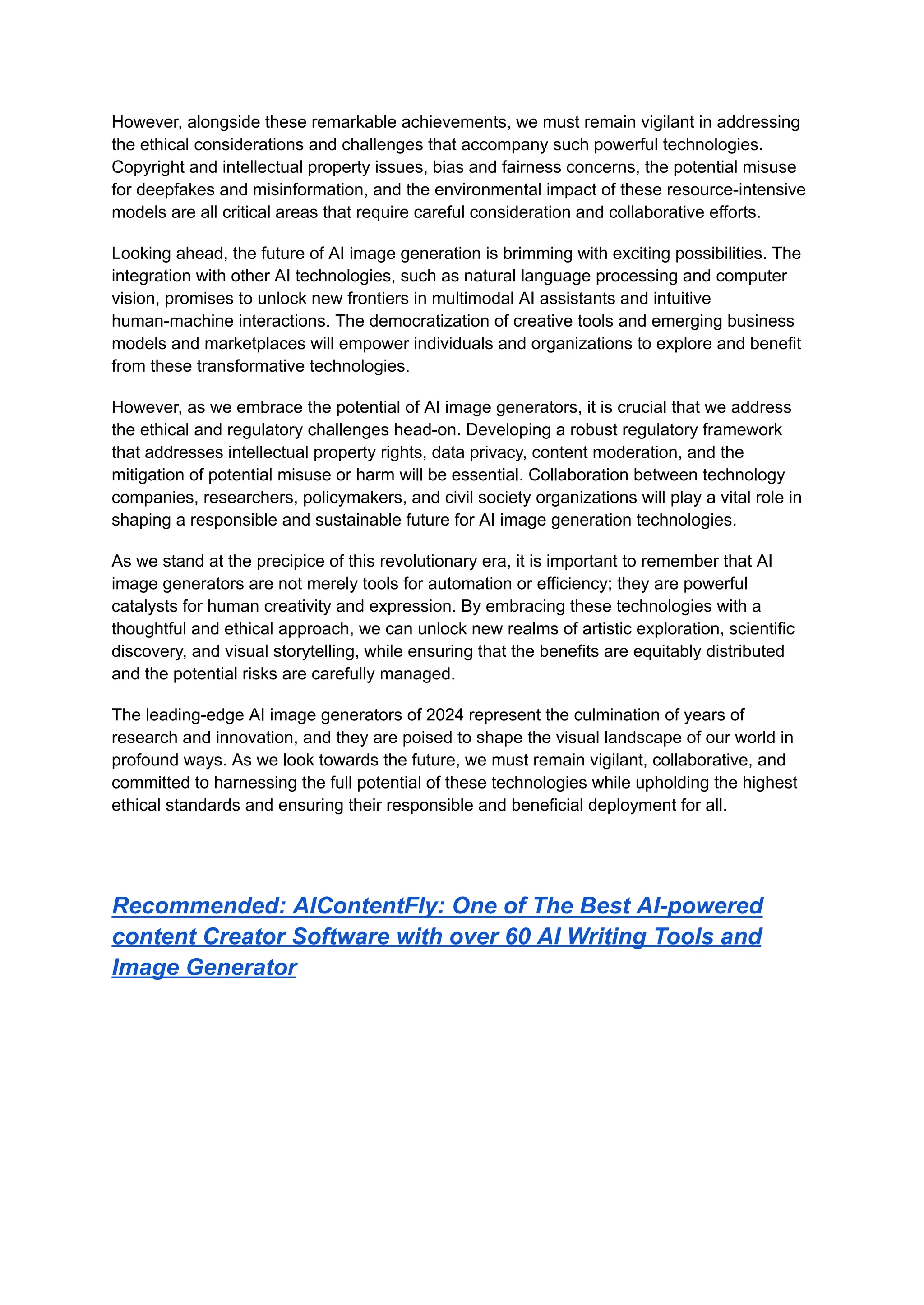In 2024, AI image generators like Stable Diffusion, DALL-E 2, and Midjourney are transforming visual content creation, making it more accessible and enabling artists to explore new artistic avenues. These tools are used across numerous industries, from advertising to education, while also raising ethical concerns regarding copyright issues, biases, and potential misuse. Future trends suggest further integration with other AI technologies and the emergence of new business models, necessitating a robust regulatory framework to address these challenges.
